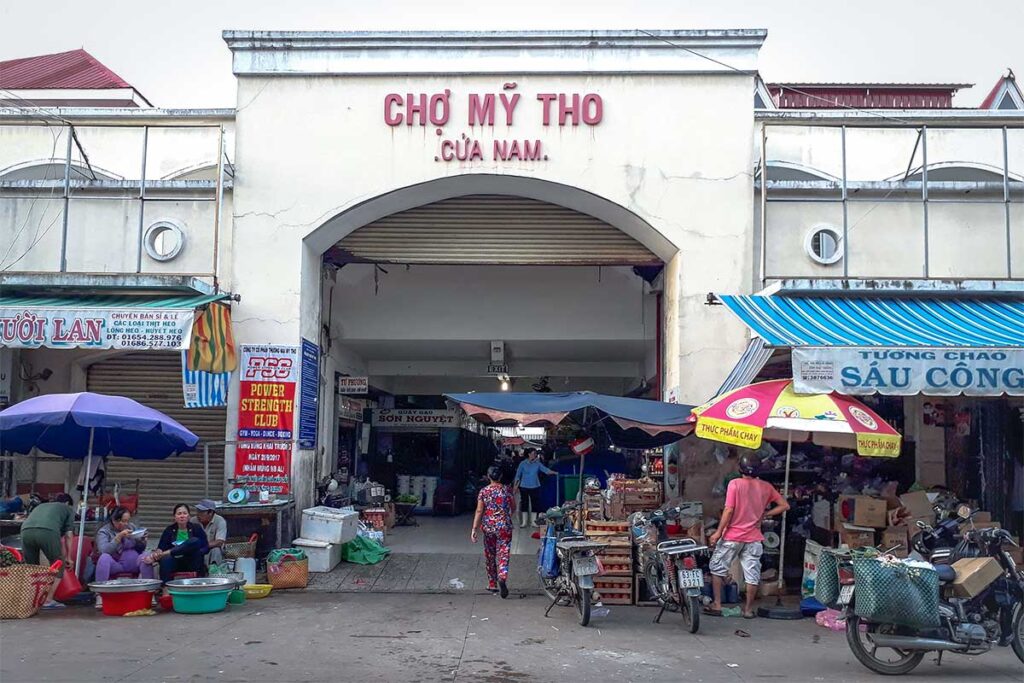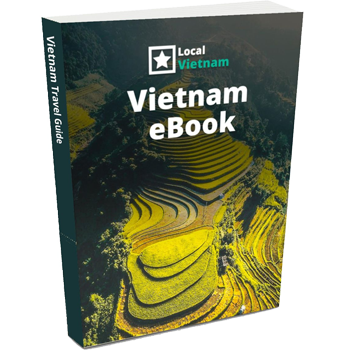What is My Tho Market?
My Tho Market sits right in the center of the city, along Nguyen Hue Street, and functions as the main shopping and trading hub for local residents. This is where people stock up on fruit, vegetables, seafood, and everyday goods, making it one of the most active corners of town.
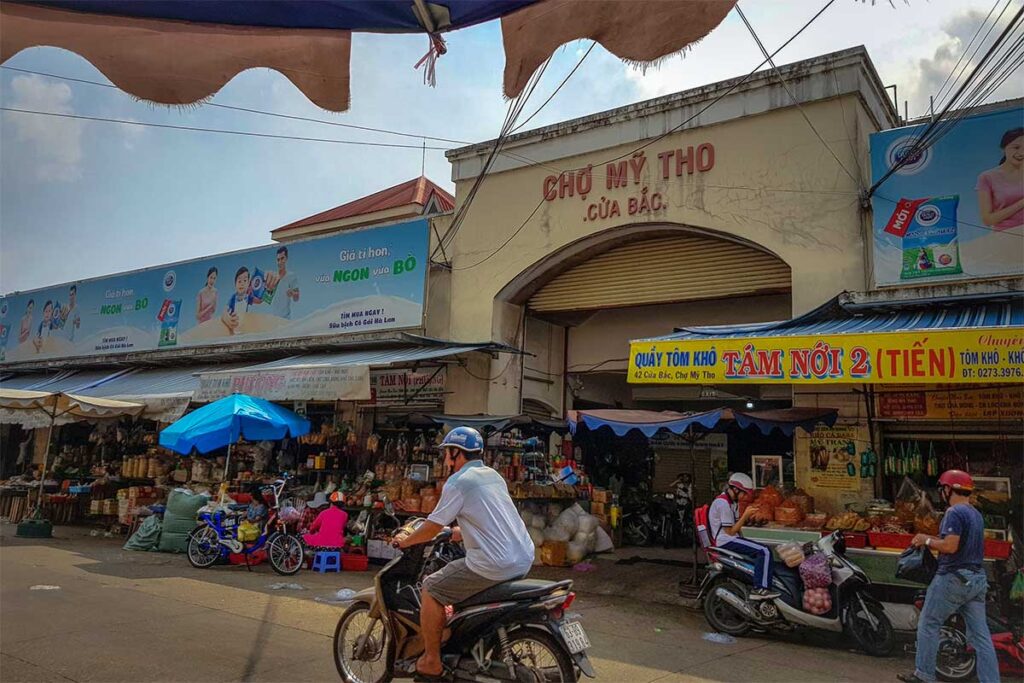
The atmosphere is typical of a Delta market: narrow aisles packed with vendors, motorbikes weaving between stalls, the smell of dried fish mixing with ripe tropical fruit, and a steady buzz of bargaining. It’s noisy, sometimes chaotic, but very much part of daily life.
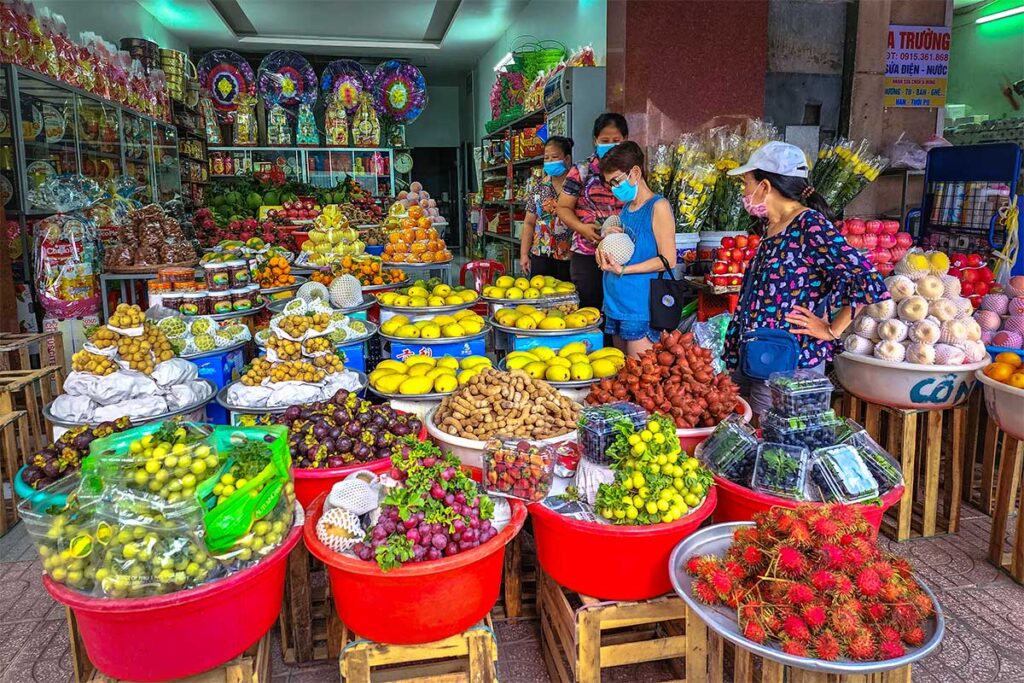
The market has been around for decades and is sometimes called Hang Bong or Ong Bau Market by locals. Unlike places such as Cai Rang or Cai Be, there’s no floating market here — this is a land-based market and the main place in My Tho to see local trade in action.
What makes it interesting for visitors is how clearly it reflects the richness of the Mekong Delta. From piles of mangos, rambutan, and dragon fruit to freshly caught fish and shrimp, you get a snapshot of the region’s abundance. It’s not dressed up for tourism, but that’s exactly why it can be worth stopping by.
Highlights of visiting My Tho Market
One of the main reasons to visit My Tho Market is the atmosphere itself. Early in the morning, the narrow lanes are busiest, with vendors calling out prices, seafood being sorted on the ground, and baskets of vegetables carried in from nearby farms. It’s messy, lively, and exactly the kind of everyday energy that defines Mekong city life.
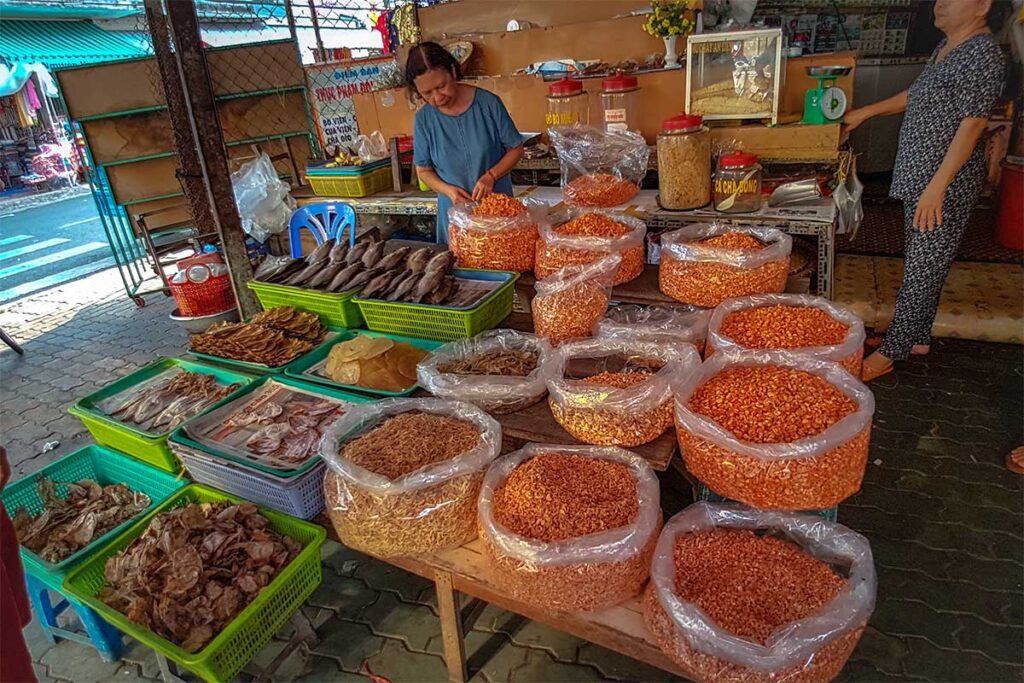
The produce section is a highlight for its sheer variety of tropical fruit. Depending on the season you’ll see rambutan with their bright red spiky skins, dragon fruit with pink rinds and white flesh dotted with black seeds, piles of longan, the sharp smell of durian, or ripe mangos and pineapples stacked high. Many vendors will cut fruit for you to eat on the spot.
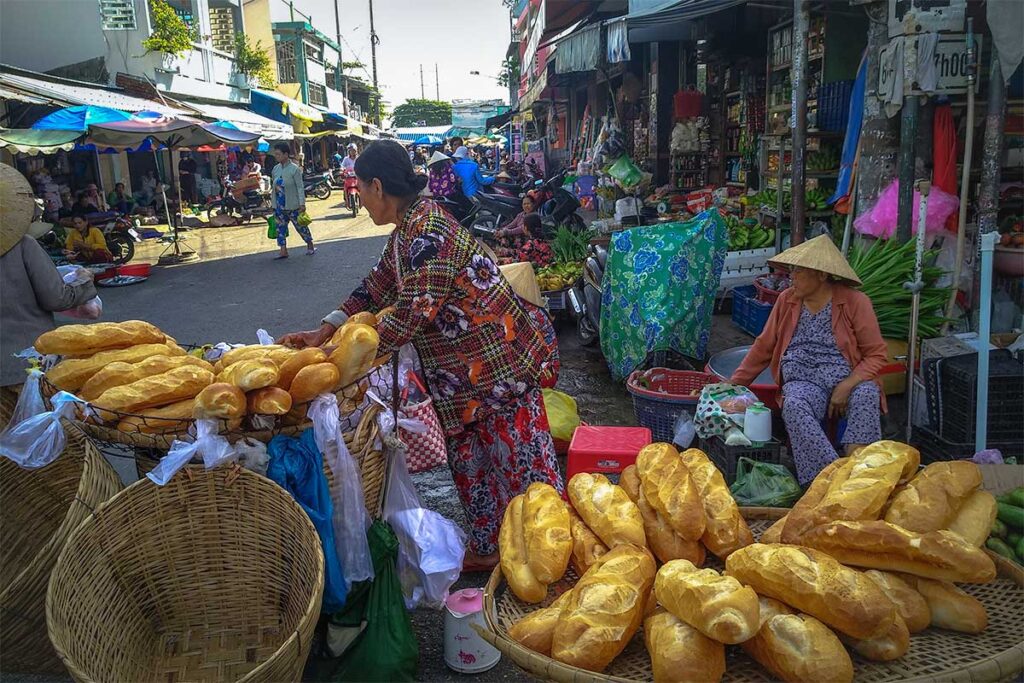
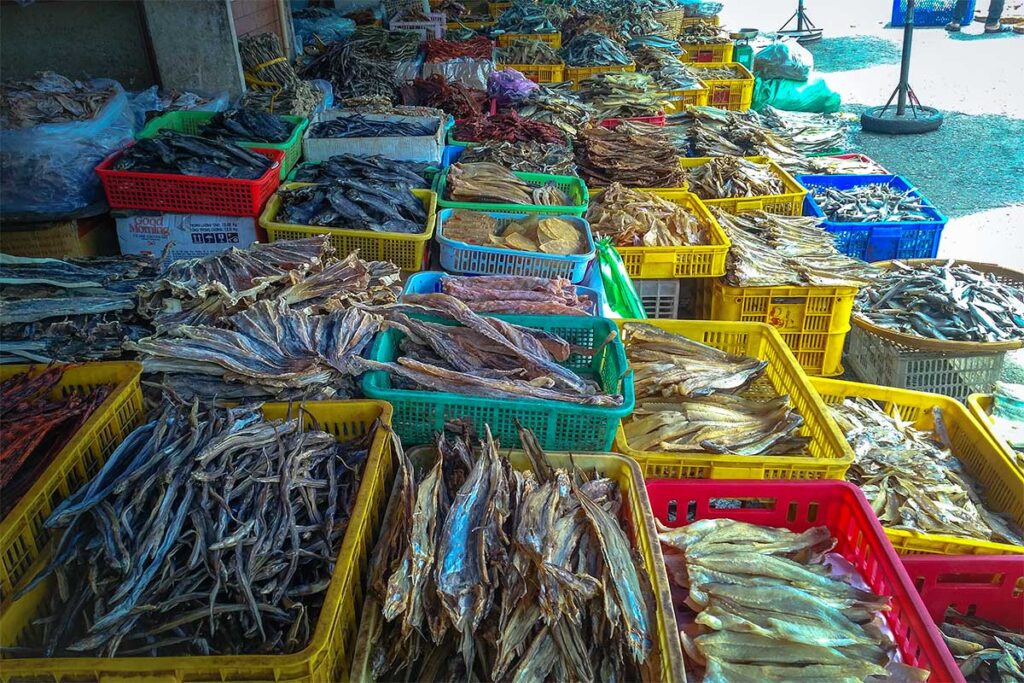
For something cooked, the market is one of the best places to try My Tho’s local dishes. Hủ tiếu Mỹ Tho (the city’s signature noodle soup) is a must-try, while broken rice plates and snakehead fish porridge with bitter greens are also typical breakfasts here. Stalls are simple but the flavors are very local.
Beyond food, you’ll also find stalls selling household goods, tools, even handmade bird cages or small handicrafts. It’s not a souvenir market in the tourist sense, but if you’re curious, it shows what locals actually buy.
Overall, the appeal is its authenticity. Unlike the big, partly tourist-focused markets in Ho Chi Minh City, My Tho Market is firmly for residents. That makes it more interesting for people-watchers, photographers, or anyone who wants a glimpse of daily life in the Delta.
Bonus: My Tho Night Market
The My Tho Night Market is located on 30/4 Street, a different spot from the daytime market. It opens around 6pm and stays active until late, with the busiest stretch between 7 and 10pm.
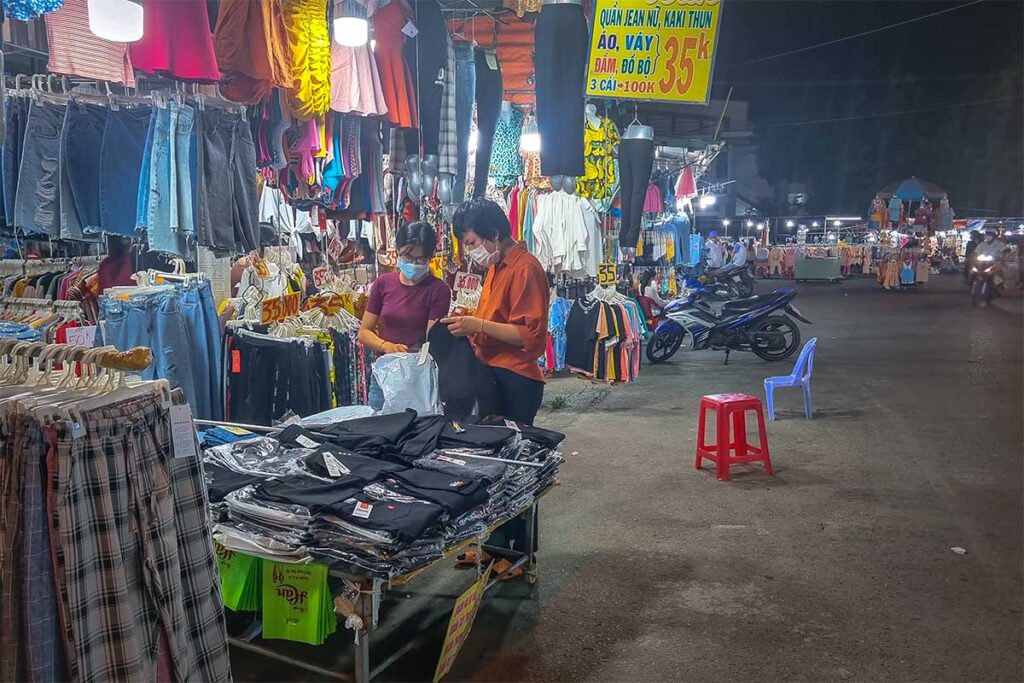
The food court is the main draw. You’ll find steaming bowls of Hủ tiếu Mỹ Tho, crispy rice with kho quet, banh xeo, and plenty of seafood dishes served at plastic tables under bright lights. Prices are local, portions are generous, and it’s a lively place to eat shoulder-to-shoulder with residents.
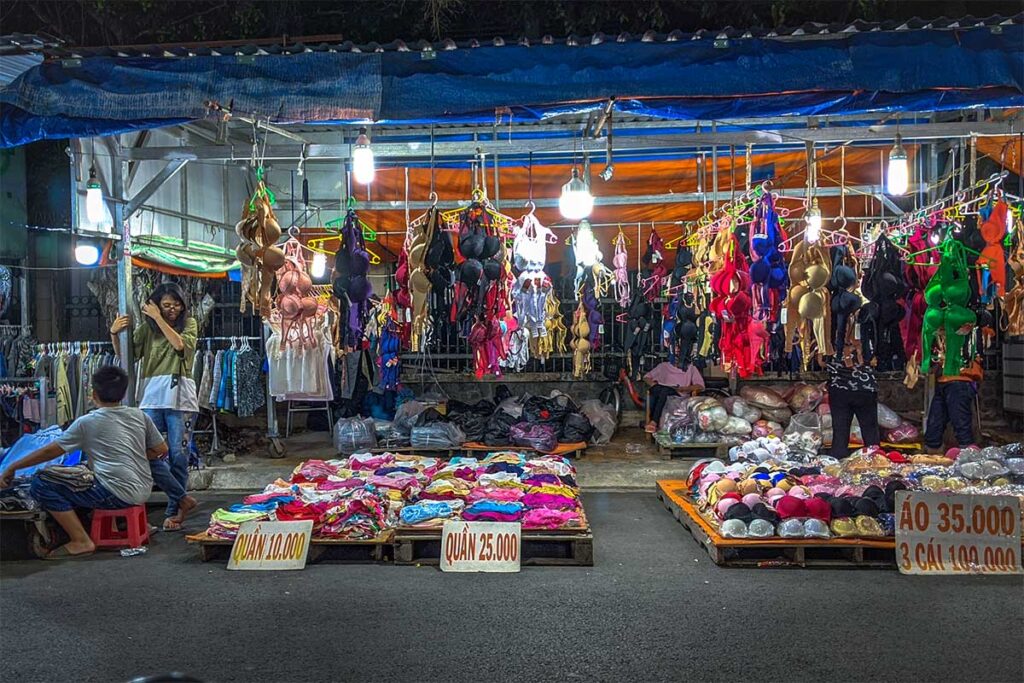
Shopping here leans toward clothing, shoes, and inexpensive accessories, with a few handicraft and souvenir stalls scattered around. It’s not a must for unique shopping finds, but it can be fun to wander.
Overall, the night market feels more like a community hangout than a curated tourist stop. If you happen to stay overnight in My Tho, it’s an easy way to spend an evening, soak up the atmosphere, and enjoy a casual meal.
Does My Tho have a Floating Market?
Despite being a major gateway to the Mekong Delta, My Tho does not have a floating market. Travelers sometimes expect one here, but the closest option is Cai Be Floating Market in neighboring Tien Giang Province. Cai Be still exists, though it has become quite small compared to the past.
The most active floating markets today are in Can Tho — Cai Rang and Phong Dien — but unlike My Tho, they cannot be done as a short day trip from Ho Chi Minh City. Other floating markets exist deeper in the Delta, but they are in more remote areas.
If you’re curious about this unique Mekong tradition, read more in our dedicated guide to floating markets in the Mekong Delta.
Practical visiting information & tips
Location & how to get there: The main market is right in central My Tho on Nguyen Hue Street, easy to reach on foot or by a short ride if you’re staying in town. From other city sights such as Vinh Trang Pagoda or the boat pier, it’s only a quick transfer by taxi or motorbike. The night market sits separately on 30/4 Street.
Opening times: The daytime market runs from dawn to dusk, with the busiest hours in the morning. The night market opens around 6pm and continues until late.
Best time to visit: Come in the morning if you want to see the full bustle of the day market. In the evening, the night market is best for eating and soaking up the local atmosphere.
Photography: Vendors are usually fine with photos if you ask first or make a small purchase. Be polite and avoid blocking busy stalls.
Etiquette: Don’t handle produce unless invited, and keep an eye out for scooters that weave through even the narrow lanes.
Nearby sights to combine with: Vinh Trang Pagoda, My Tho Cathedral, Thoi Son Islet, or Dong Tam Snake Farm all make easy add-ons. (See our full My Tho guide for details.)
Other tips: Bring cash, as card payment isn’t accepted. Watch your belongings in crowded alleys. For daytime visits, bring sun protection; for the night market, mosquito repellent is useful.
Is My Tho Market worth a visit?
My Tho Market is worthwhile if you’re already in the city or want a quick look at daily Mekong Delta life. It adds local color to a day trip or overnight stop, especially if you enjoy markets and street food.
That said, if your time is limited, you won’t miss much by skipping it. The rural markets and canal-side villages around the Delta usually offer a more distinctive and memorable experience than this city market.
